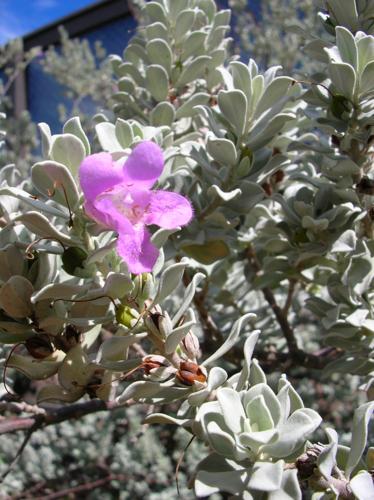I have two Meyer Lemon trees, bought and planted at the same time. One is in the back yard where it gets lots of sun. The other, in the side yard, only gets partial midday sun. The leaves on the side-yard tree are yellow and the tree bears little fruit while the other, although shaded by a large evergreen tree, has flourished and looks healthy except for a back branch which is turning yellow. Can you offer any suggestions as to the cause of this situation?
Answer: I think you may have answered your own question, assuming your trees are otherwise healthy and receiving proper water and nutrients. Citrus trees need full sun to be at their best. From your description, the healthier tree is getting “lots” and the side yard only gets partial sun. The ideal would be eight hours of sun and that is not possible with only midday sun. Since “lots” is not a number, I will guess that even the tree in the backyard could do better if your large evergreen tree didn’t shade it. If it’s not possible to change the surroundings to allow more sun on the trees, you might consider moving them to a sunnier spot.
Question: We have two Texas Ranger bushes that are each about 5 feet tall. We were at a local nursery recently to get some information about trimming our trees and the subject of cutting back the bushes came up. The person at the nursery suggested cutting the bushes down this February to only 1 foot high, straight across (almost like a flat-top haircut). That seemed pretty drastic to me and I wanted to get your opinion.
Answer: What your nursery person described is called renovation pruning and it is appropriate for some situations such as when shrubs become too large and you want to improve their aesthetic value. It is a drastic method and shouldn’t be pruned this way every year because it is stressful for the plant. It also works best if you are able and willing to follow up the buzz cut with some selective pruning a few months later. The initial severe cutting of all branches to 12-18 inches above ground will cause a flush of growth in the spring and into the summer. Once this happens it is best to follow up with the selective removal of about 50 percent of the branches at the base to thin out the canopy. Then prune the tops of the remaining branches to different heights, making sure to prune just above outward facing buds to encourage healthy branching to the outside of the plant. If this still seems too drastic or you aren’t interested in cutting your shrubs down to size, you could simply do the selective pruning part without cutting all branches back to the 1-foot level.
Question: You recently provided some info on fertilizing citrus and I have located the chart you referenced. You often recommend watering to a depth of 36 inches, so I’ve been using a deep watering rod on my three mature fruit trees (10-12 feet, grapefruit, lemon, and orange). What is the preferred method for applying fertilizer? Should I use a pre-mixer with the watering rod below grade or apply the fertilizer on the surrounding ground under the tree and soak it from the top down?
Answer: The preferred method of fertilization is to spread it around the drip line of the tree and water it into the soil as you described. This is also the preferred method for irrigation so you can do both at the same time. I don’t recommend the deep watering rod because it likely bypasses some or many of the absorbing roots of the tree, which are typically in the top 1 to 2 feet of soil.
Question: This fall I found I had holes in my tomatoes. I cut some open and there were some kind of brown hard stuff in the fruit. Any idea what they are?
Answer: The signs indicate tomato fruitworm (Helicoverpa zea) damage. These insects are fairly common and also known as corn earworms and cotton bollworms, depending on the crop where they are found. The eggs are laid on the plant and the larvae bore into the fruit where they can stay until they complete their development and drop to the soil to pupate. The brown stuff is probably frass (caterpillar poop). These insects are difficult to manage once inside the fruit so it is best to catch them before they enter and/or dispose of infested fruit before they have a chance to emerge. Lima beans can be used as a trap crop because they prefer them to tomatoes. There are also pheromone traps available to monitor when the adults are flying so you can tell when to start looking.






